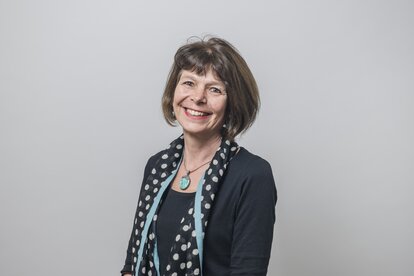Last week was a particularly intense one for many of us: it was “Shareweek”, the gettogether between senior country programme staff and thematic, geographical and fundraising staff in Head Office. Wider organisational sharing is also promoted through live social reporting. We only hold this event every second year, so the time is precious, and internal topics jostle for attention. Nevertheless there is always a slot for one or two external speakers to stimulate new thought. This time the topic was working in urban areas, on which we had inputs from Cecilia Tacoli of IIED, and Ann O’Mahony of Concern (one of our partners in Alliance 2015). The argument for working more in urban areas is of course their growth – both through urbanisation (the share of the national population living in towns and cities, largely driven by rural to urban migration) and through natural population increase.
Rural – urban linkages
Perhaps the first point to note is that although our work focuses on rural areas, it does not stop where the countryside ends. We are already active in many small to medium sized towns – serving, for example, as market centres for value chain projects; municipal centres in governance projects; and the location of training centres in vocational skills projects. Looking more closely at urban rather than rural residents, it becomes quickly clear that those who are disadvantaged in urban settings are not necessarily the same individuals or groups as those in rural settings. For example, a young Burma woman (the ethnic majority in Myanmar) who has grown up in relative well-being in a Burma village may suddenly experience vulnerability if she migrates to an urban area of mixed ethnicity, especially if she has few contacts and little money. By contrast, a Dalit in Nepal who has experienced caste discrimination all his life in his village may find it possible to escape his caste “label” in an urban setting, and forge a new identity for himself. Any rural-based assumptions need to be questioned if urban-based interventions are to respond to the needs of the most vulnerable and disadvantaged.
The GAM project in Bolivia
In Bolivia, we are already implementing an urban development project. The Gestión Ambietal Municipal (Municipal Environmental Management) project, or GAM, is supported by the Swiss Agency for Cooperation and Development (SDC) and operates in towns in four locations: the upper valley of Cochabamba, the Chichas, the Chaco, and (most recently) Lake Titicaca. The aim of the project is to promote sustainable urban environmental management through organised waste collection and reduced water pollution. Broadly, one would expect the most economically poor and socially marginalised urban residents to be most affected by pollution, and the least able to do something about it. This, however, is too much of a generalisation for a project operating in areas with a total population of some 180,000. Martin de Castillo, the project Co-Manager (and Deputy Country Programme Director), explained how, during a pilot phase of rigorous planning, the project went about identifying the most disadvantaged and then tailoring interventions to reach them.
Identifying the disadvantaged in three of the four areas
As a starting point, the team identified three main factors associated with high environmental pollution: lack of access to basic sanitary services (water, sewerage and waste collection); little or no access to productive resources; and lack of political voice. They used these factors to define a scale of disadvantage, as related to enviroonmental pollution. At the same time, they established a baseline data set of the population, capturing a variety of characteristics including gender; identity (belonging to an indigenous group or not); educational level; family income; perception of environmental well-being and economic status, and so on. Then they superimposed the “factors of disadvantage” on the baseline dataset. This clearly showed, for example, that more women were disadvantaged than men, but other characteristics were also strongly correlated with disadvatage. Regional comparisons showed that the Chaco has overall higher levels of disadvantage, the Chicas the lowest, with the upper reaches of the Cocabamba valley falling in-between.
Targeted interventions
Having identified the most disadvantaged, who represent some 15% of the total poplulation in the project area, various targeted interventions are now being devised. For example, for women and men with low literacy levels, visual communication materials and radio programmes ae being developed. For families living on a low income, reduced tariffs for waste collection are proposed, whilst for those living close to waste dumping grounds or open sewerage, opportunities to generate income from recycling are being investigated. Specific gender interventions are also being developed – such as building women’s capacities to participate in municipal meetings, promoting the use of native languages in such meetings (often women are less comfortable in Spanish); offering women particular opportunities for employment in environmental management; and motivating young men and women, in particular, to break gender stereotypes in community actions.
What is perhaps of particular interest in the example of GAM is the structured way that the project team went about its targeting – avoiding any emotive arguments or assumptions, and sticking to facts. This is no doubt one of the reasons that the interventions proposed have been readily adopted by the municipalities concerned.
The photo shows a team of town cleaners in Villazon; team spirit and dignity in work is being deliberately promoted.


